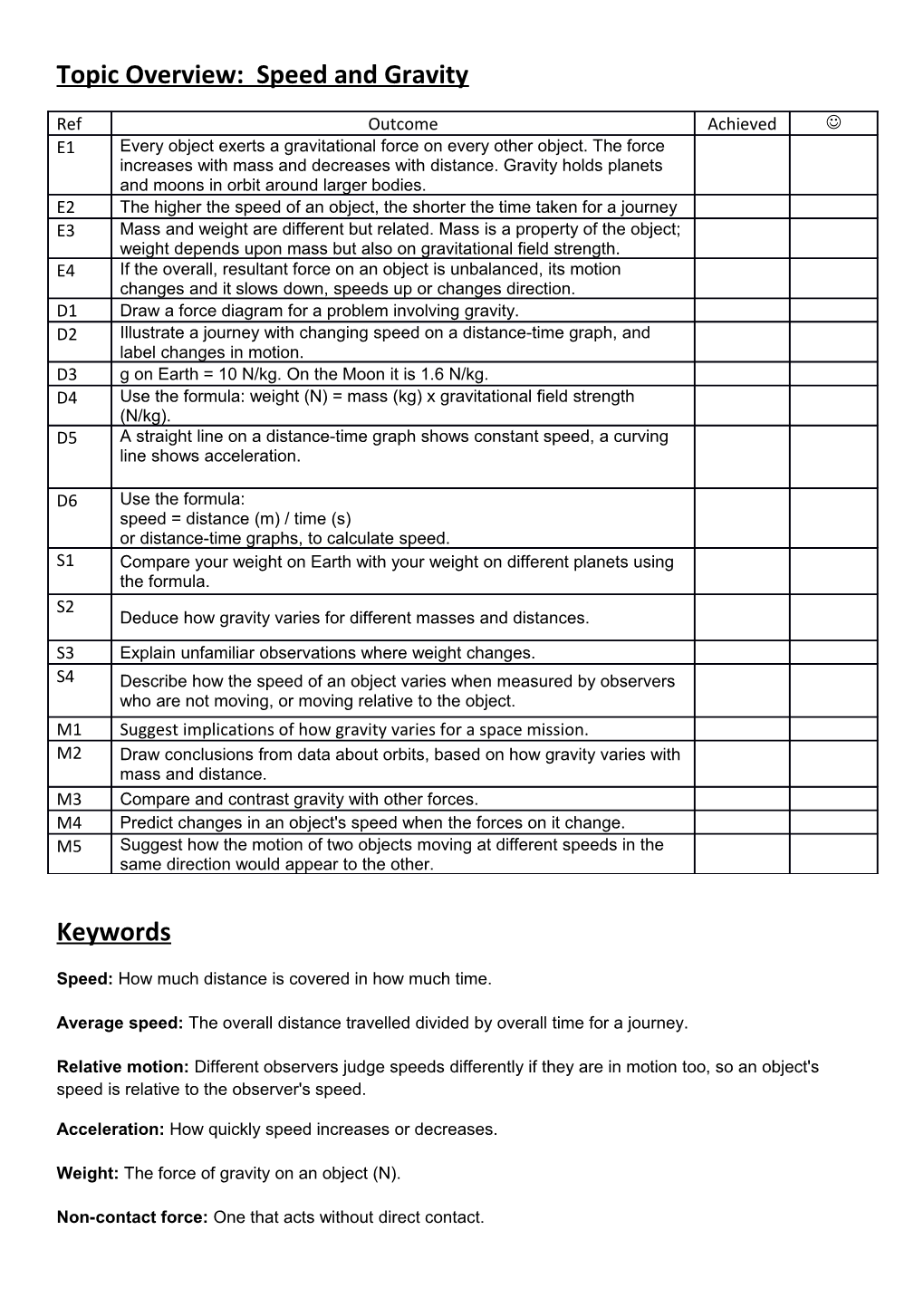Topic Overview: Speed and Gravity
Ref / Outcome / Achieved / E1 / Every object exerts a gravitational force on every otherobject. The force increases with mass and decreaseswith distance. Gravity holds planets and moons in orbitaround larger bodies.
E2 / The higher the speed of an object, the shorter the time taken for a journey
E3 / Mass and weight are different but related. Mass is aproperty of the object; weight depends upon mass butalso on gravitational field strength.
E4 / If the overall, resultant force on an object is unbalanced, its motion changes and it slows down, speeds up or changes direction.
D1 / Draw a force diagram for a problem involving gravity.
D2 / Illustrate a journey with changing speed on a distance-time graph, and label changes in motion.
D3 / g on Earth = 10 N/kg. On the Moon it is 1.6 N/kg.
D4 / Use the formula: weight (N) = mass (kg) x gravitational field strength (N/kg).
D5 / A straight line on a distance-time graph shows constant speed, a curving line shows acceleration.
D6 / Use the formula:
speed = distance (m) / time (s)
or distance-time graphs, to calculate speed.
S1 / Compare your weight on Earth with your weight ondifferent planets using the formula.
S2 / Deduce how gravity varies for different masses and distances.
S3 / Explain unfamiliar observations where weight changes.
S4 / Describe how the speed of an object varies when measured by observers who are not moving, or moving relative to the object.
M1 / Suggest implications of how gravity varies for a space mission.
M2 / Draw conclusions from data about orbits, based on how gravity varies with mass and distance.
M3 / Compare and contrast gravity with other forces.
M4 / Predict changes in an object's speed when the forces on it change.
M5 / Suggest how the motion of two objects moving at different speeds in the same direction would appear to the other.
Keywords
Speed: How much distance is covered in how much time.Average speed: The overall distance travelled divided by overall time for a journey.
Relative motion: Different observers judge speeds differently if they are in motion too, so an object's speed is relative to the observer's speed.
Acceleration: How quickly speed increases or decreases.
Weight: The force of gravity on an object (N).
Non-contact force: One that acts without direct contact.
Mass: The amount of stuff in an object (kg).
Gravitational field strength, g: The force from gravity on 1 kg (N/kg).
Field: The area where other objects feel a gravitational force.
